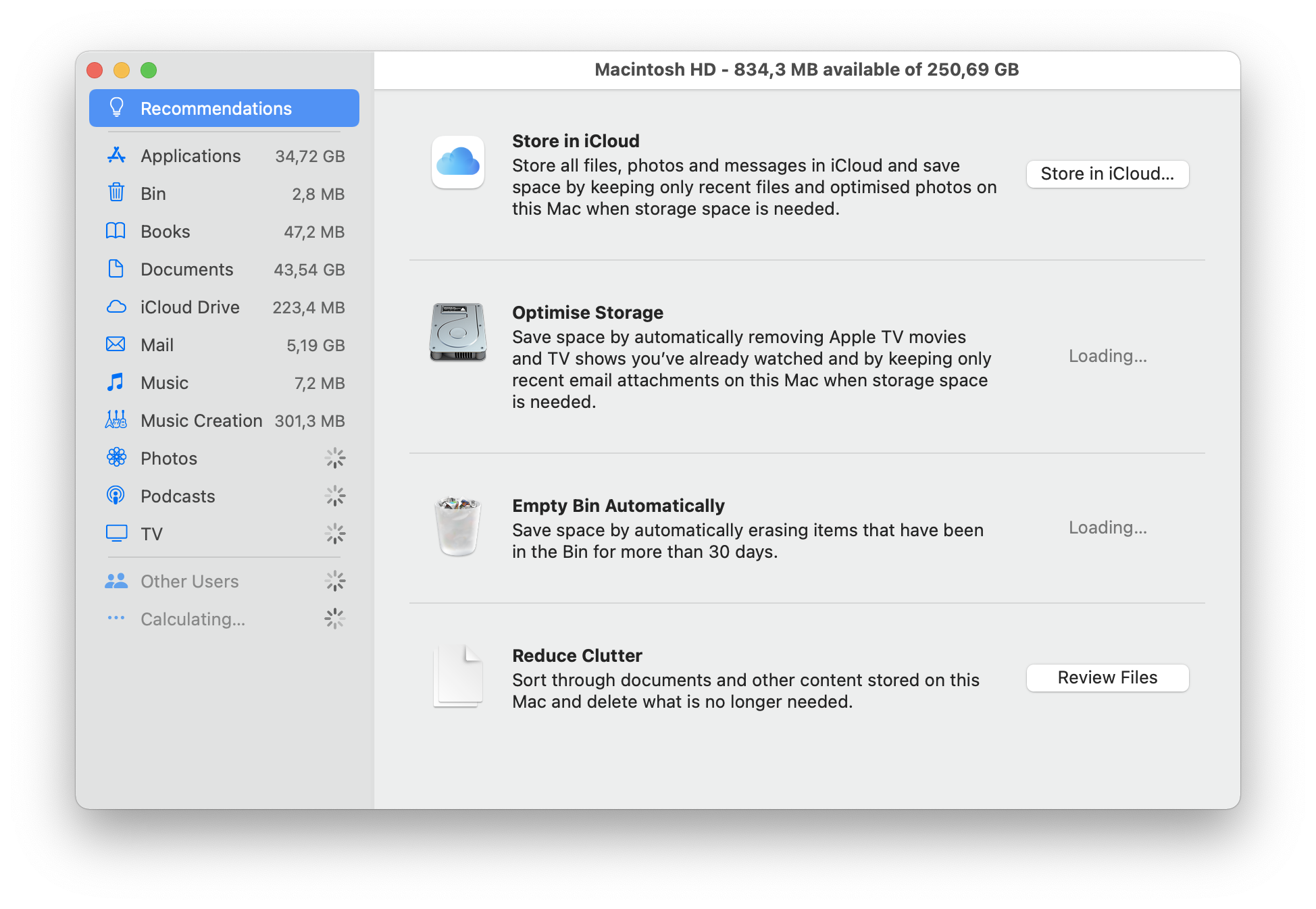

WARNING: It's a good idea to do a little online research into what any unknown processes are and do before forcibly quitting them, as some may have significant bad effects on the system if killed.

The amounts they were using still don't explain the dialog's claim, and memory pressure was still in the green, but as soon as I quit them (didn't even have to force-quit) the dialogs stopped and haven't recurred since. Turns out I had a few UNIX processes using unusually large amounts of memory.
#MAC OS X STARTUP DISK NO MORE SPACE APPLICATION MEMORY FREE#
I was being barraged by this dialog with neither the listed applications nor free disk space explaining the supposed problem. They'll be listed in the Memory tab of Activity Monitor, but won't appear in that dialog. If you're seeing this message but the listed applications don't seem to explain the supposed excessive memory consumption, check whether non-application processes might be behind it. Method (1) is my temporary fix, so that when I eventually enact method (2) I will have restored the snappy performance I expect while running many heavy-duty programs simultaneously. If you're on an older Apple laptop or iMac or Mini, the OWC Data-Doubler is a really fantastic way to accomplish this. For me, this means my 1TB OS drive needs >20% free space (200GB)! Your requirements may be different. move all your music and photos to another drive), to allow the system to handle your typical virtual memory needs. Close some web-pages/programs before opening the hefty apps, such as MS Office, Parallels, 3D CAD, Adobe programs etc.Ģ) Free up more space on the system hard drive (eg. But if our expectation of the computer and hardware constraints stay the same (and we run the same number of processes without changing anything else), eventually we'll run into the problem again.ġ) Open fewer tabs/pages and fewer programs at one time. I believe restarting the computer always alleviates this problem for a short while - primarily by unloading all the webpages and apps we had launched over time. More commonly, it's the additional functionality we expect of many programs/web plugins.

In short, in my experience there usually isn't a single process that's suddenly taking up a huge amount of memory (although a leaky program could indeed be a culprit - Sketchup 2016 does this to me, for example). syncing across devices, notifications, automatic updating etc. New OS's and new web pages just use a lot of memory to provide us with the services we expect to "just work" (eg. On top of that, account for all the ads, movies, flash, scripts, plugins and 360 videos etc. In activity monitor, you'll notice that every single tab & window (every open web page) is it's own process, taking up a significant chunk of memory. On top of that, it's worth noting that regular web use now requires far more memory than it did in the past.

(I've definitely always wished that the OS could just reserve enough space for itself, but it just can't predict how many applications we'll be running). Operating Systems use the hard drive for extra memory storage, called "virtual memory". In my experience, this occurs when my main system hard drive is running low on free space.


 0 kommentar(er)
0 kommentar(er)
